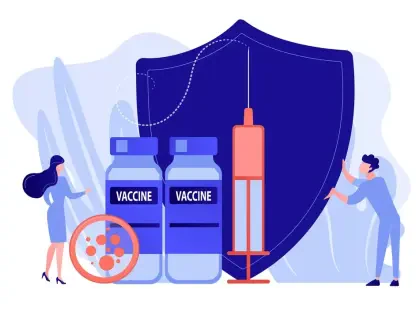The case of Vance Boelter, a suspect accused in the politically charged shooting that left former state Speaker Melissa Hortman and her husband deceased, has triggered one of the most extensive manhunts witnessed across state and federal lines. The sheer scale of resources and personnel invested in capturing Boelter highlights the significant impact of such politically motivated crimes and raises many questions about public safety and law enforcement capabilities.
Unraveling a Complex Incident
The incident involving Vance Boelter unfolded in a manner that has captivated public attention and posed significant challenges for law enforcement. Boelter is alleged to have impersonated a police officer during the heinous act, resulting in the deaths of Melissa Hortman and her husband. In a shocking twist, State Senator John Hoffman and his wife were also targeted, suffering injuries from Boelter’s assault. The motivation for these attacks appears politically driven, as suggested by the contents of Boelter’s notebook, which listed various pro-choice individuals. Yet, law enforcement officials, including Drew Evans of the Minnesota Bureau of Criminal Apprehension, have been hesitant to draw definitive conclusions from this material, citing a lack of prior threats associated with Boelter.
Boelter’s actions have stirred a profound reaction, catalyzing a manhunt of unprecedented scale and complexity, involving over 100 officers converging from multiple law enforcement agencies. This chaotic yet coordinated effort underscores the formidable task of apprehending a suspect with possible access to numerous transportation modes, exemplifying the unpredictable nature of modern criminal pursuits. The manhunt has not only demanded logistical coordination among agencies but also captured the attention of both the public and officials, prompting debates and discussions at multiple levels.
Dissecting the Manhunt and Its Community Impact
The search for Vance Boelter has become a multi-layered operation, employing a variety of strategies and techniques to ensure his capture. The involvement of local, state, and federal agencies has been pivotal, revealing the labyrinthine complexity of a manhunt on such a scale. Despite multiple tips and a significant financial reward offered by the FBI, Boelter’s whereabouts remain elusive, continuing to challenge the expansive network engaged in his pursuit.
The public’s engagement in this case has been notable, reflecting both apprehension and activism as citizens submit tips and follow developments closely. Similarly, the discourse among political figures and community leaders has illuminated underlying tensions, as discussions pivot to the broader implications of politically motivated violence. The incident has fostered a dialogue surrounding enhanced safety and preventive measures within politically volatile environments, further intensifying scrutiny on existing security protocols.
Examining Law Enforcement Approaches
Law enforcement agencies have deployed numerous innovative strategies to overcome challenges in apprehending Boelter, showcasing a combination of traditional tactics and new technologies. Officials like Drew Evans have illuminated how critical it is to adapt rapidly to a suspect’s changing movements, especially given Boelter’s potential access to diverse means of transportation. These challenges emphasize the importance of flexibility within law enforcement operations and highlight the difficulties confronted in capturing highly mobile suspects.
Additionally, panel discussions centered around security and political violence have further explored these complexities, supporting a deeper understanding of rising politically motivated aggression. These discussions have offered key insights into preventive strategies that can be deployed to safeguard public figures and institutions from similar threats.
Engaging the Community Through Outreach
Responses to the incident have prompted community members to engage actively through workshops and outreach initiatives designed to reinforce solidarity. Such activities offer practical guidance on fostering communal resilience, emphasizing the importance of vigilantly preventing violence. Participants in these initiatives have shared varied reactions, underscoring both concern and a desire for collective action. These engagements create a platform for learning, allowing communities to come together in addressing and mitigating the impact of such tragic events.
In parallel, the role of technology within law enforcement has not gone unnoticed, as advancements in surveillance and detection are increasingly utilized during such operations. Emerging technologies demonstrate significant potential in enhancing the effectiveness and efficiency of search efforts, providing critical support in high-stakes investigations.
Learning from the Incident
The aftermath of this tragic event yields essential lessons for future security and community measures. The case has spurred discussions about potential policy shifts and how to manage politically motivated threats more effectively. The far-reaching impacts on public perceptions of safety demonstrate the need for continual reassessment of current practices in combating political violence. Moving forward, the commitment to strengthening preventive measures and building community trust remains imperative as society addresses the complex nature of politically charged crimes.









